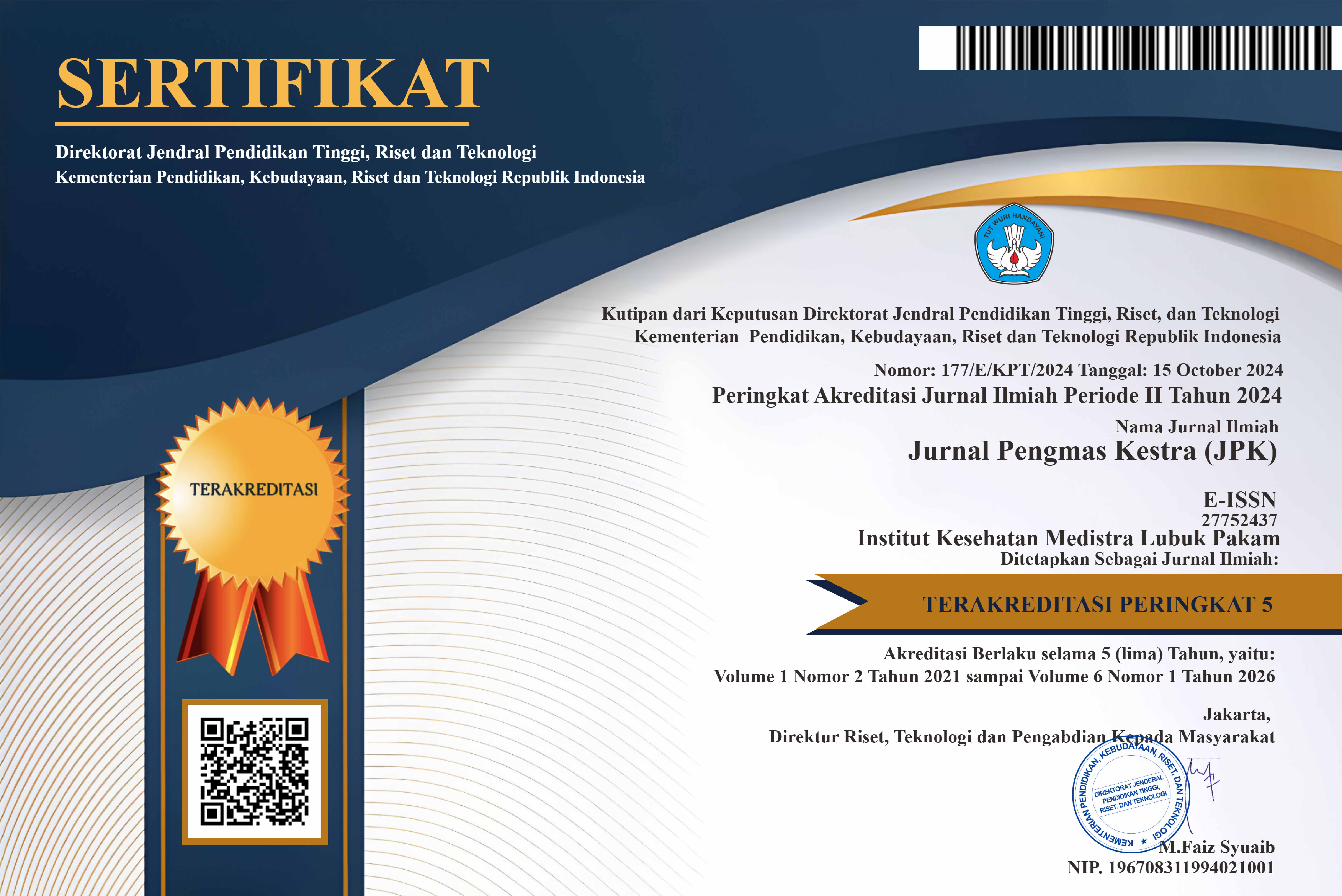Socialization of Characterization and Molecular Identification of Protease Enzyme-Producing Bacteria from Tempeh Traded in Lubuk Pakam Market
DOI:
https://doi.org/10.35451/jpk.v3i2.1991Keywords:
Bacterial; Protease; Pseudomons stutzeri ; TempehAbstract
Enzymes are an important ingredient in industry and health. There are several types of enzymes that are widely used by humans such as cellulase enzymes, lipase enzymes, amylase enzymes and protease enzymes. Protease enzymes are enzymes that can accelerate the breaking of protein peptide chains. This enzyme is one of the most widely used enzymes in the industry with sales value reaching 60% of world enzyme sales. Very many industrial products use enzymes with enzyme demand that continues to increase. Total sales of enzymes in the industry in 2010 reached 3.3 billion US dollars and will continue to increase in the coming years.Protease enzymes can be isolated from plants, animals and microorganisms. The use of microorganisms in producing protease enzymes is very potential due to the very fast growth of microorganisms and can be grown on fairly cheap media. The purpose of this socialization is to provide information related to the examination of bacterial molecules producing protease enzymes in tempeh. From the activities carried out, it can be concluded that the presence of bacteria in tempeh sample S-2 which has the largest diameter is identical to the bacterium Pseudomonas stutzeri, while from the results of the participants' understanding, the results of the pre-test dominant understanding are sufficient (60%) and the results of the post-test results are dominantly good understanding (67%) which means that seminar participants are able to understand the material presented.
References
Kumar S et al.,. 2018. MEGA X: Molecular Evolutionary Genetics Analysis across computing platforms. Mol Biol E. vol 35 . (6): 1547-1549.
Olajuyigbe, F.M. 2013. Optimized Production and Properties of Thermostable Alkaline Protease from Bacillus subtilis SHS-04 Grown on Groundnut (Arachis hypogaea) Meal. Advances in Enzyme Research 1(4): 112-120.
Rachmawani NR et al.,.2017. Khasiat Pemberian Buncis (Phaseolus vulgaris L .) sebagai Terapi Alternatif Diabetes Melitus Tipe 2 The Effect of Beans ( Phaseolus vulgaris L .) as Alternative Therapy Of Type 2 Diabetes Mellitus. Majority.
Said, M. I dan J. C. Likadja. 2012. Isolasi dan identifikasi bakteri yang berpotensi sebagai penghasil enzim protease pada industri penyamakan kulit PT. Adhi Satria Abadi (ASA), Yogyakarta. JITP, vol 2 (2): 121-128.
Srinivasan R et al.,. 2015. Use of 16S RRNA gene for identification of a broad range of clinically relevant bacterial pathogens. PLoS ONE. vol 10 (2): 1-22. DOI: 10.1371/journal.pone.0117617.
Zahra Kamil K. 2019.Isolation and Identification of Pseudomonas stutzeri Isolated from Intrauterine Devices. Al-Kufa University Journal for Biology / VOL.8/ NO.3.
Downloads
Published
Issue
Section
License
Copyright (c) 2023 Visensius Krisdianilo

This work is licensed under a Creative Commons Attribution 4.0 International License.
Copyright in each article is the property of the Author.




















